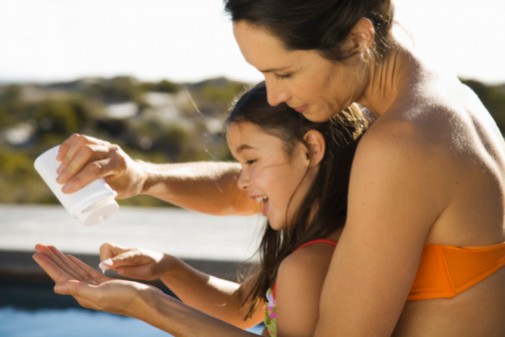Melanoma linked to sunburn as a teen

For many teens, summertime is synonymous with suntans and sunburns. But getting just a few serious sunburns in your teens can mean you’re more likely to develop skin cancer later in life, according to new research.
A study published in Cancer Epidemiology, Biomarkers and Prevention, surveyed over 100,000 nurses for 20 years looking at their medical history and their current health. Researchers found that those having five or more serious sunburns between the ages of 15-20 resulted in an increased likelihood for developing skin cancer. For melanoma, the most deadly form of skin cancer, the likelihood of cancer increased by 80 percent for those with more than five blistering sunburns.
“Parents may need to be advised to pay more attention to protection from early-life sun exposure for their kids in order to reduce the likelihood of developing melanoma as they grow up,” said Dr. Abrar Qureshi, study researcher and chair of the Department of Dermatology at Warren Alpert Medical School of the Brown University and Rhode Island Hospital.
One simple way to protect kids from the sun is to make sure kids wear sunscreen. Parents are advised to read sunscreen labels before buying to ensure adequate coverage.
“Use for a sunscreen with an SPF of 15 or higher,” said Dr. Paola Portela, a pediatrician at Advocate Good Samaritan Hospital in Downers Grove, Ill. “The sunscreen label should say ‘broad spectrum.’ This means that it will protect against UVA and UVB rays.”
Planning ahead can also help avoid sunburns. It is best to apply it 30 minutes before going outside and reapply every two hours. Sunscreen should be applied more frequently if kids are swimming or sweating excessively, said Dr. Portela.
The sun’s ultraviolet rays are strongest between 10 am to 4 pm. Keep infants under the age of 6 months out of the sun during that time. If a child must go out, the American Academy of Pediatrics recommends dressing the child in lightweight pants, long-sleeved shirts and a hat with a brim that covers the face.
“When you are going to apply sunscreen, test a small area on your child’s skin before covering their whole body to make sure that the child will not have an allergic reaction to the lotion,” said Dr. Portela.
Related Posts
Comments
3 Comments
About the Author
health enews staff is a group of experienced writers from our Advocate Health Care and Aurora Health Care sites, which also includes freelance or intern writers.


















I remember when I was younger I thought I could tan…definitely not. Since I was 18 or 19 I have been extremely careful not to get burned and use lots of sunscreen regularly.
I read the article from the Dailymail and pulled away with…”OR…higher amounts of sever sunburns in the early adult years is indicative of a person with behaviors that put them at risk for skin cancer later in life.” It wasn’t that the 5 sever sunburns early in life directly lead to an increase in cancer, but that people who (and this is an opinion) are dumb enough to keep burning themselves to the point of blisters are probably going to carry on that (dumb) behavior into middle adulthood and that risky behavior complied over a long period of time is of course going to increase your chances of skin cancer. Just because a person has had some bad sunburns in their life, doesn’t mean they are automatically at a higher risk than everyone else. Continued and correct use of sunscreen, over a long period of time, while working or playing outdoors is the safest thing a person can do, but freaking out over individual instances of UV exposure that one receives on a normal day is not healthy or helpful.
Speaking as a teen lifeguard who sits in the sun all day, I am very careful about putting sunscreen on! I have blisterd a couple times and am determined not to make it to five! Anyways, look at Hollywood, pale is in now!